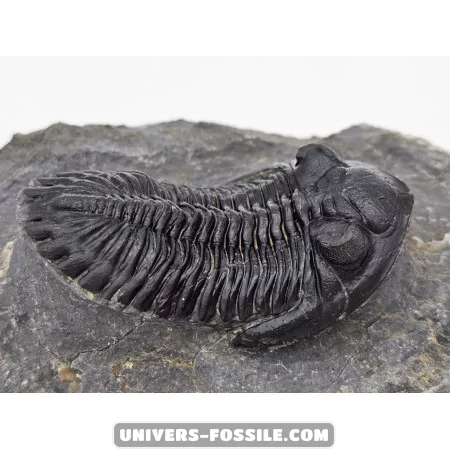Hollardops Trilobites - Ancient Marine Fossils

Hollardops Trilobites
Hollardops trilobites are an extinct species of trilobites, a group of marine arthropods that thrived millions of years ago. These fascinating creatures were among the prominent inhabitants of the Paleozoic oceans, offering paleontologists valuable insights into ancient marine life.
Anatomy of Hollardops Trilobites
Hollardops trilobites were characterized by their segmented body into three distinct lobes, hence their name. Here are some of the most remarkable anatomical features of these creatures:
- Segmented body: Like all trilobites, Hollardops had a body divided into three longitudinal parts - the cephalon (head), the thorax (body), and the pygidium (tail).
- Calcified exoskeleton: The outer shell of trilobites was formed of chitin and calcite, providing rigid protection against predators.
- Compound eyes: Hollardops trilobites possessed large compound eyes, consisting of many small hexagons, giving them a panoramic view of their environment.
- Antennae: Although few fossilized specimens have retained their antennae, it is likely that Hollardops had them to detect environmental stimuli.
- Segmented legs: Trilobites used their segmented legs to move along the seafloor, sifting through the sediments in search of food.
Hollardops Trilobites: Fascinating Fossils from the Ancient Seas
Hollardops trilobites were remarkable marine creatures that roamed the seas during the Middle to Upper Devonian period, thriving in a diverse ecosystem filled with various forms of marine life. Fossils of these intriguing trilobites have been unearthed in geological formations around the world, offering valuable insights into their habitat, lifestyle, and eventual extinction.
Habitat:
Hailing from a bygone era spanning approximately 390 to 370 million years ago, Hollardops trilobites inhabited a world teeming with life. Their fossils have been discovered in regions like Morocco, Spain, Germany, and the Czech Republic, shedding light on their geographic distribution and evolutionary history.
Lifestyle:
These benthic creatures scoured the seafloor for sustenance, scouring organic detritus and small organisms with their intricate, segmented appendages. Despite their predatory prowess, Hollardops trilobites fell victim to other marine predators of the time, showcasing signs of battles and diseases on their robust exoskeletons.
Extinction:
Regrettably, like all trilobite species, the reign of Hollardops came to an end as they succumbed to the tides of evolution. Studying these ancient fossils offers a poignant glimpse into a bygone era when these creatures ruled the ancient seas.
Hollardops Trilobites
Trilobites, ancient marine arthropods that once roamed the seas in vast numbers, eventually became extinct by the end of the Permian period around 250 million years ago, during the mass extinction event that wiped out most life on Earth. The exact causes of trilobite extinction remain a topic of debate among paleontologists, but it is likely they were influenced by climatic changes, geological events, and evolutionary pressures.
Despite their extinction, Hollardops trilobites and other members of their order continue to fascinate scientists and paleontology enthusiasts worldwide. Their well-preserved fossils offer valuable insights into the biodiversity and evolution of ancient oceans, allowing us to better understand the history of life on Earth.
In conclusion, Hollardops trilobites are fascinating examples of the diversity of ancient marine life. Their fossils are precious treasures that allow us to travel back in time and explore the mysteries of prehistoric oceans.
